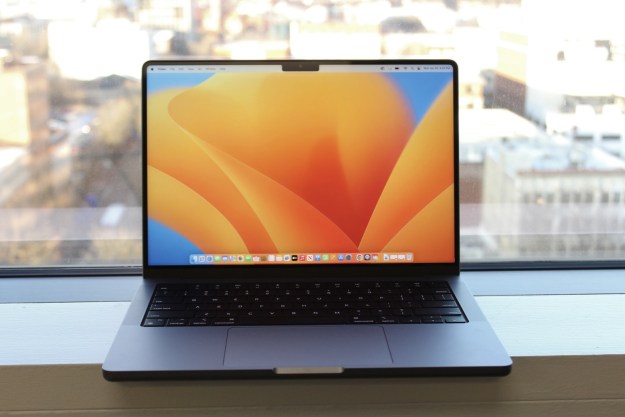Apple devotees have been anticipating today’s ‘Spring Forward’ event for some time thanks to its promise of more details on the Apple Watch, but the company also gave us a glimpse at the future of the MacBook. The next version of the laptop is set to be available next month, and it’s a bold step forward for the brand.
Apple is referring to the device as the MacBook, without any other embellishments — and that minimalist title echoes the wafer-thin design of the product itself. At a weight of just two pounds and a thickness of 13.1mm, this is a laptop that has been built as small and svelte as the latest technology would allow.
Part of its size is thanks to the new logic board, which is two-thirds smaller than any that Apple has manufactured in the past. Each individual component was designed to fit exactly with the rest, contributing to the new MacBook’s reduced size and weight. The fact that this is the first Mac without a fan also contributes to that effort, as well as ensuring that the computer can operate in silence.
However, it doesn’t seem that the new MacBook has sacrificed form for function, as even its basic model sports a 1.1 Ghz Core M processor as well as 8GB of RAM and a 256GB SSD. It also boasts a 12-inch Retina display with a 2,304 by 1,440 pixel count, which features new LED technology that allows for the same brightness from up to 30% lower energy output. The environmental impact of the laptop was referenced several times during its unveiling, and was described as “the world’s most energy efficient notebook”.
Related: We tested the Core M, see how it performs
The size of the new MacBook has apparently been decided by the width of its keyboard, which spans from edge to edge of the body of the device. Its keys have been redesigned, with a new butterfly mechanism set to make every stroke as accurate as it is satisfying. Those keys will be individually backlit, which saves on space as well as refining the effect.
The trackpad has been given an overhaul, too. The entire area is clickable, and software settings will allow you to fine-tune that click to your own specifications. It also allows for the new ‘Force Click’ gesture, which simply requires a more forceful click from the user. The functionality of this gesture will vary depending on context — examples given include using it on an address to bring up a map instantly, or using it on a file on your computer to be given a quick preview of its contents.
The new MacBook will also support USB-C, with Apple firmly behind the push for the new technology becoming the industry standard. The device’s single USB port will be used for charging, as well as its common functionality — potentially a sticking point for users accustomed to making use of multiple ports as well as their power cable at the same time. It’s not clear if a headphone jack is included as well. Apple says DisplayPort, VGA, HDMI, USB and power can all be routed through the single port.
“All-day battery life” was also touted, which in real terms is the equivalent of nine hours browsing the web on a wireless network. This increase is thanks to cutting-edge contoured batteries, which have been shaped to the specifications of the MacBook’s ultra-durable casing, which ensures that every last millimetre of space is being used to its best advantage.
While the focus of this portion of today’s event was on the new MacBook, some upgrades to the rest of Apple’s catalogue of laptops were also announced. The MacBook Air will receive a slight refresh, with tweaks to its flash and its processor. The MacBook Pro will receive those upgrades as well as the new Force Touch trackpad and a slightly extended battery life. Both of those products ship today.
The Apple Store will begin shipping the new MacBook from April 10, starting at $1,299 for its standard model. Much like the iPhone 6, it will be available in Silver, Space Gray and Gold.
Editors' Recommendations
- Why Samsung’s answer to the MacBook Pro can’t quite compete
- MacBook Pro OLED: Here’s everything we know so far
- The new iPad Pro would be perfect, if only it were a Mac
- MacBook Pro 16 vs. MacBook Pro 14: The important differences
- If you buy one MacBook Air alternative, make it this one


